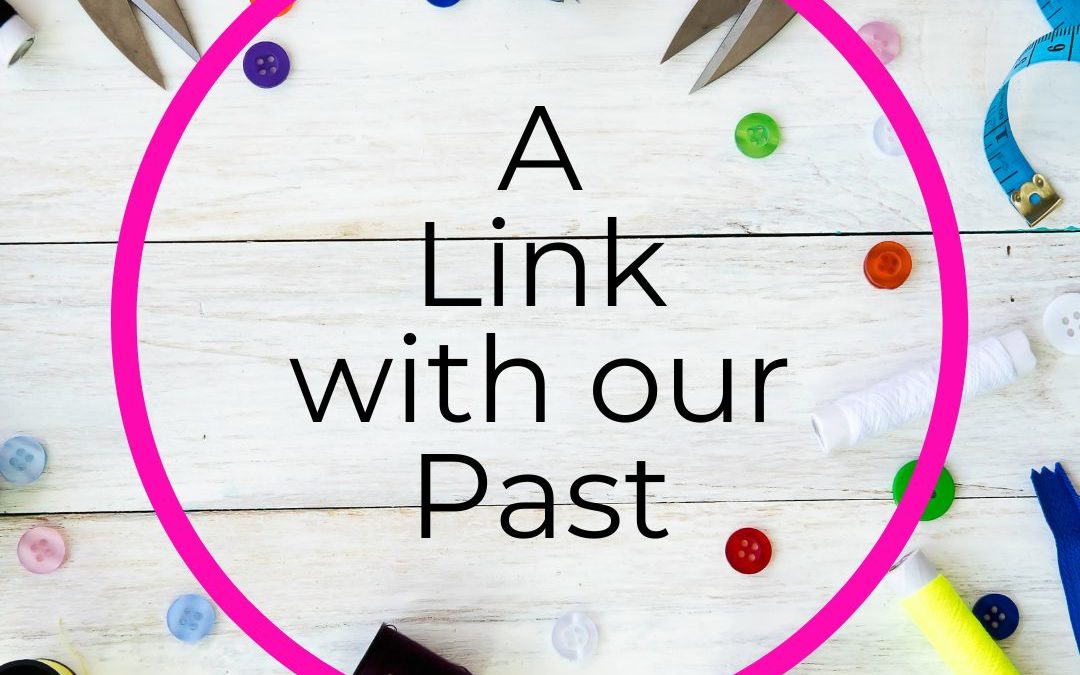Our past is aligned hugely with the needle arts – and the more I research this topic, the more connections I observe.
It’s even in our language – I love discovering the commonality of stitch-related terms used in everyday language as well as literature, their supposed origins, or how they came about – that alone is a fascinating field of investigation.
But it begs the question, why do we still want to pick up a needle and thread in this day and age?
Because there is, and will always be, a strong pull to use our hands and minds to make and create – regardless of age, sex, culture, race, or time.
Just look at the rise of the slow stitch movement with a focus on the environment, recycling, and sustainability – but with an emphasis on the mindfulness and meditative aspect of using a needle and thread to create something of value from something with meaning.
Then there’s the world of fashion – where would that be without the application of those sometimes outrageously decorative flourishes we’ve all come to admire? Think Schiaparelli, Lesage, and Indian goldwork embroidery.
But dig deep enough and even ancient Greek physicians were aware of the benefits of working quietly, repeating the movements of a needle and thread worked into woven cloth – prescribing it to their anxious patients. So it’s no wonder that embroidery-as-therapy was used during both World Wars for wounded soldiers, reviving interest in needlework, especially for men.
There’s a huge connection with those who gather together regularly to make, fundraise, protest, donate, exhibit, and offer support to each other – all formed around the act of stitching.
A simple needle, thread, and a piece of fabric can be worked by the young, the old, men or women, worked alone or collaboratively, as a form of self-expression, for pleasure, as therapy, to clothe and cover, keep us warm, decorate or protest, maintain traditions and culture, inform or simply help us to remember.
Because it’s healing, remedial, soothing, purposeful, and invigorating, we still want to pick up that needle and thread to perform the very same actions our ancestors did.
Read Rozika Parker’s book ‘The Subversive Stich – The Making of the Feminine’ to understand how needlework was used in Victorian England to inculcate young women into prescribed, domestic, feminine ideals – while at the same time conveniently erasing men from any history associated with their culture of embroidery, forming an opposing new ideal of ‘masculinity’.
Yet, of course, men stitched – including sailors, artists, writers, politicians, aristocrats, and even royalty.
Unfortunately, in Britain at least, this erasure of men from the needlework arena, where it was looked upon as both professional and commercial also coincides with embroidery being lowered to a domestic, feminine craft. A perception that persists still.
Read Joseph McBrinn’s fascinating book ‘ The Queering of the Subversive Stitch – Men and the Culture of Needlework’, where he reveals thorough research around men who defied the norms of societal thinking – raising the interesting idea of teaching young boys to pick up a needle and thread rather than sit in front of a screen, gaming. I know which is healthier.
But what about the future? Where are we heading?
Well, the more I research, the more heartened I am.
More and more embroidery, along with other needle arts, feature in professional gallery exhibitions or are included in calls-for-entry for art competitions and grants – as well as stitch-based organizations steadily becoming more professional in their judging, branding, and messaging.
Slowly, slowly, the barriers are coming down, but there’s still a way to go.
So I look forward with great optimism because that link with our past is just too strong.


